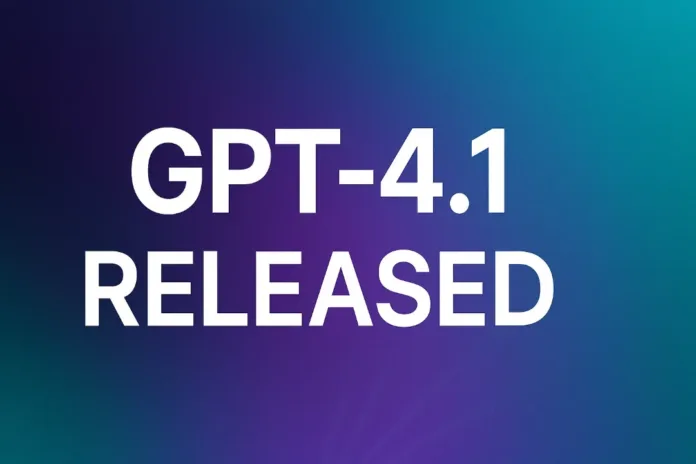The Article Tells The Story of:
- OpenAI quietly launches ChatGPT-4.1 with no safety report.
- Company claims it’s “not a frontier model”—but experts disagree.
- Former insiders warn safety may be compromised for speed.
- Missing system card sparks fears of hidden AI risks.
GPT-4.1: A Leap in AI Capabilities
On April 14, 2025, OpenAI introduced ChatGPT-4.1, the latest in its series of AI models, including GPT-4.1. This release includes GPT-4.1, GPT-4.1 Mini, and GPT-4.1 Nano, each offering improved coding abilities, better instruction adherence, and an expanded context window supporting up to one million tokens. These models are designed to be more efficient and cost-effective, with GPT-4.1 reportedly costing 26% less than its predecessor, GPT-4o. The introduction of GPT-4.1 marks a significant milestone in AI technology.
Despite these advancements, OpenAI did not release a safety report, commonly known as a system card, for ChatGPT-4.1. This omission marks a departure from the company’s usual practice of providing detailed safety evaluations alongside new model releases.
OpenAI’s approach to launching AI models has always been characterized by a careful balance of innovation and responsibility. With the introduction of ChatGPT-4.1, this balance appears to be shifting, igniting debate within the tech community. The implications of this shift extend beyond just technological advancements; they touch on the ethical considerations of deploying AI systems.
Many experts argue that the classification of AI models into categories such as ‘frontier’ versus ‘non-frontier’ is increasingly arbitrary. This classification may lead to varying safety standards, with potentially serious consequences. For instance, if a model is not deemed a frontier model, does that justify a lower level of scrutiny? This question is crucial for the future of AI safety protocols.
The former insiders at OpenAI have highlighted a troubling trend. Reports suggest that in the race to innovate, there is a risk of compromising safety. For example, if safety testing is expedited to meet deadlines, it could leave the model vulnerable to untested risks that may not be evident until after the model is widely deployed.
The absence of a safety report is particularly alarming in light of recent incidents within the AI community where undisclosed risks led to significant issues. One notable case involved a previous model that, lacking adequate oversight, generated harmful content in certain contexts, raising alarms about the possible repercussions of releasing advanced AI without thorough safety evaluations.
OpenAI’s decision to launch GPT-4.1 without a safety report also highlights a critical gap in the company’s communication strategy. Stakeholders, including developers, researchers, and users, rely on these documents to guide their interactions with AI technology, assess its reliability, and implement it effectively within their own projects.
Moreover, OpenAI has made significant claims regarding the capabilities of GPT-4.1, asserting that it surpasses its predecessor in terms of efficiency and functionality. However, without a safety report, users are left to navigate these claims without the necessary context or understanding of potential risks associated with the new features.
As businesses and organizations increasingly integrate AI into their operations, the demand for transparency has never been more pronounced. Consumers are more informed about AI capabilities and risks and are beginning to expect companies like OpenAI to uphold high standards of accountability.
Read More About Our Article of OpenAI Offers Free ChatGPT Plus to College Students in Bold AI Battle Published on April 4, 2025 SquaredTech
In the absence of a safety report, external researchers and developers may find themselves in a precarious position. They would lack essential information that could guide their implementations of GPT-4.1, potentially leading to unintended consequences in live applications of the model.
Absence of Safety Documentation
Historically, OpenAI’s system cards have been a vital part of their product releases, ensuring that safety assessments are well-documented and accessible. This practice not only reassures stakeholders about the model’s safety but also fosters an environment where informed decisions can be made regarding AI usage.
In the case of ChatGPT-4.1, OpenAI stated that the model is not considered a “frontier model,” and therefore, a separate system card will not be released. This decision has sparked concern among AI safety researchers and industry observers.
The lack of a safety report for ChatGPT-4.1 comes at a time when OpenAI faces criticism for its approach to AI safety. Reports indicate that the company has reduced the time allocated for safety testing of new models, potentially compromising the thoroughness of these evaluations .Windows Central
Implications for AI Safety and Transparency
The decision to forgo a safety report for ChatGPT-4.1 raises questions about OpenAI’s commitment to transparency and responsible AI development. System cards have been a key tool for communicating the safety measures and potential risks associated with AI models.
Without such documentation, it becomes challenging for external parties to assess the safety and reliability of ChatGPT-4.1. This lack of transparency may hinder independent research and oversight, which are crucial for ensuring the responsible deployment of AI technologies.
Furthermore, the omission of a safety report may set a concerning precedent for future AI model releases, potentially leading to a decrease in industry-wide transparency standards.
Conclusion
OpenAI’s release of GPT-4.1 without an accompanying safety report represents a significant shift in the company’s approach to AI transparency and safety. While the model offers notable improvements in performance and efficiency, the absence of detailed safety documentation raises concerns about the potential risks and the company’s commitment to responsible AI development.
As AI technologies continue to evolve and integrate into various aspects of society, maintaining rigorous safety standards and transparent practices remains essential. The AI community and stakeholders will be closely monitoring OpenAI’s future actions to ensure that advancements in AI do not come at the expense of safety and public trust.
Stay Updated: Artificial Intelligence


